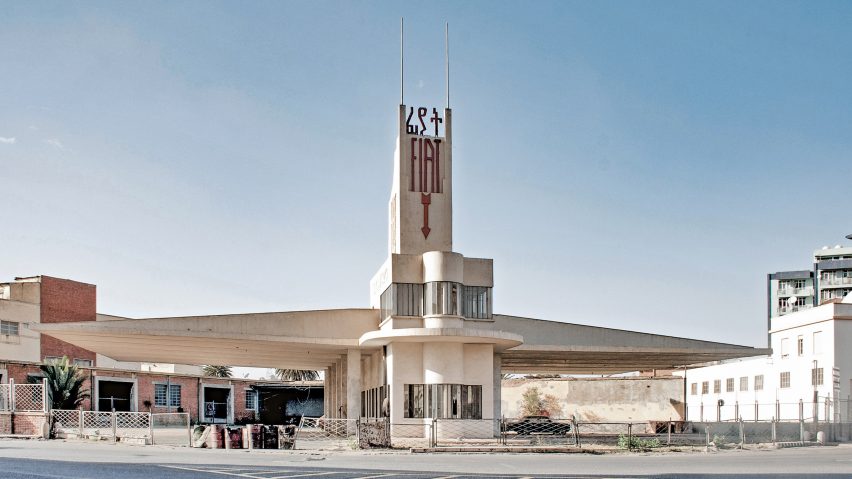
Architecture highlights from northeast Africa include projects from Sudan and Somalia
In the fourth part of our collaboration with Dom Publishers, the editors of the Sub-Saharan Africa Architectural Guide pick their architectural highlights from countries in northeast Africa.
With contributions from nearly 350 authors, the Sub-Saharan Africa Architectural Guide aims to be a comprehensive guide to architecture in the African countries that lie south of the Sahara.

The fourth volume of the seven-volume publication is named Eastern Africa from the Sahel to the Horn of Africa and focuses on the architecture of Chad, Sudan, South Sudan, Eritrea, Djibouti, Ethiopia and Somalia.
Read on for picks from the region selected by the book's editors Philipp Meuser and Adil Dalbai:
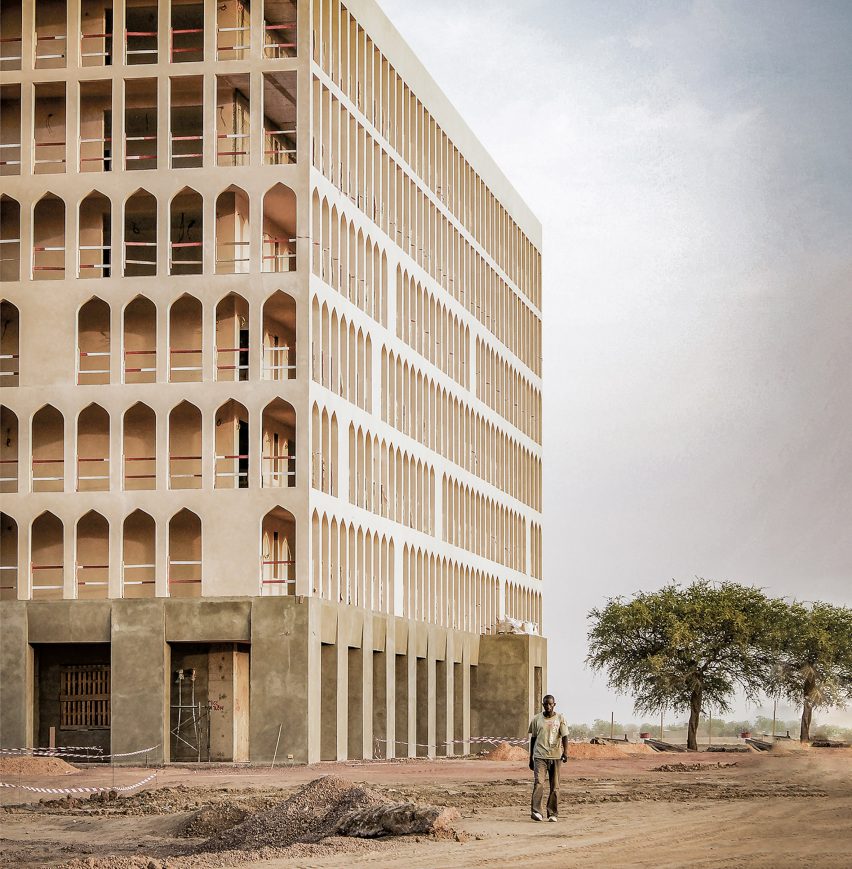
Chad
N'Djamena Grand Hotel, N'Djamena, by TAU ⁄ Roberto Sechi, Luca Compri
The N'Djamena Grand Hotel is part of an architectural complex designed to host big political events. It is situated in N'Djamena city centre, overlooking the Chari River. The building is characterised by its palace-like structure and its rectangular shape.
The facade of this hotel building clearly shows the Arabic influence on Chadian architecture. The repetitive patterns of the facade give the building a grandeur that many modern mosques can hardly match.
In total, it has eight levels. On the ground floor is the lobby (a double-height space), the restaurant, the cafeteria, the meeting room, and all of the administrative offices. The 187 bedrooms cover the remaining floors and have varying sizes: the higher the floor number, the bigger and more luxurious the rooms become, ending with the deluxe executive suites on the top floor.
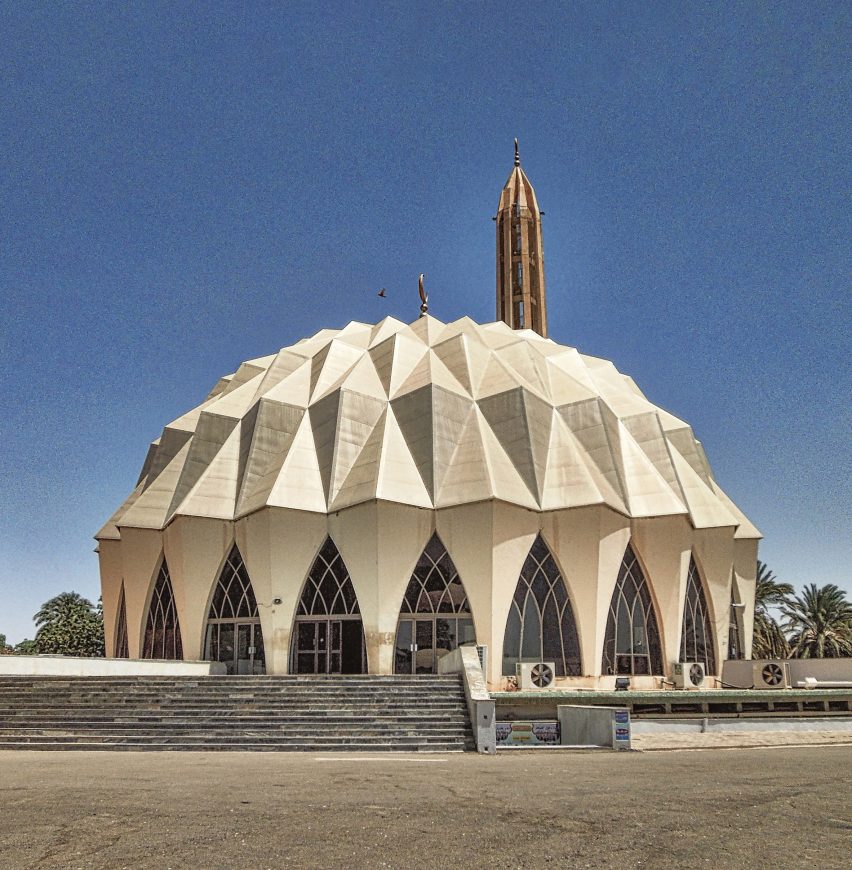
Sudan
Al-Nilein Mosque, Morada, Gamar Eldowla Abdelgadir
Al-Nilein Mosque stands near the confluence of the two Niles, facing west onto the White Nile. It was a graduation project by Gamar Eldowla Abdelgadir, one of the University of Khartoum's architecture students during the mid-1970s.
The project comprises three components: the mosque, the library, and the space for communal activities. Shaped like a giant shell, the main building's geodesic dome shelters a large column-less room, where the walls are continuously connected through the curved ceiling.
The form of this mosque almost resembles a coconut macaroon – even if strictly devout Muslims don't like to hear that. But from an architectural point of view, it is a true masterpiece.
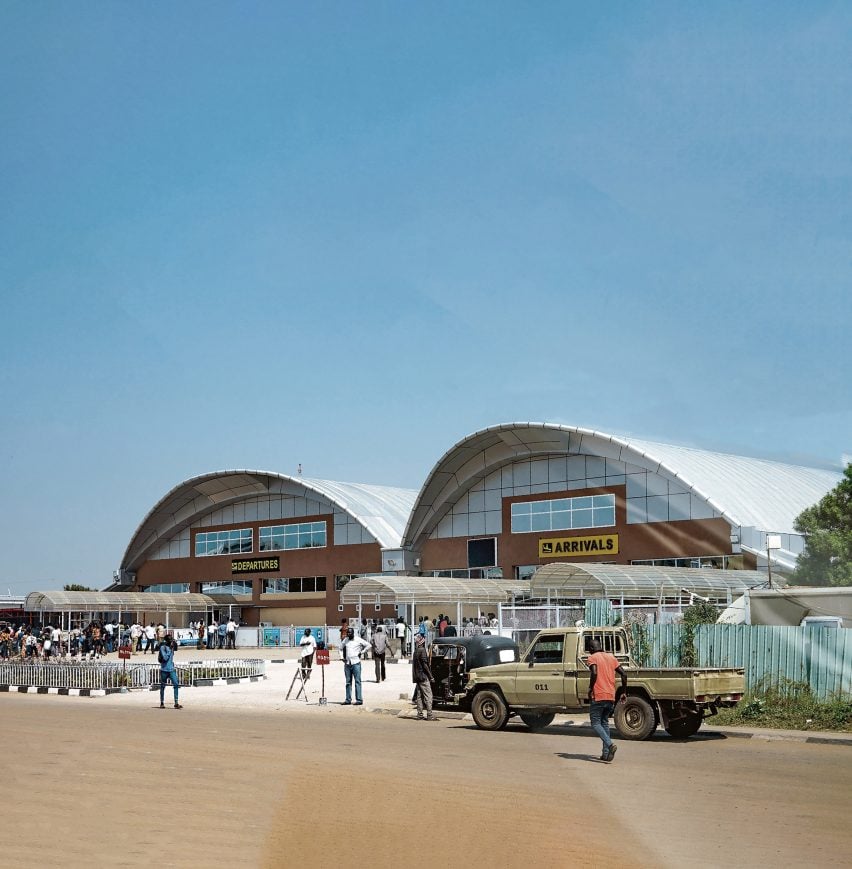
South Sudan
Juba International Airport, Juba, by China Communications Construction Company
Following the 2005 Comprehensive Peace Agreement (CPA) and the establishment of the autonomous government of Southern Sudan, the building of a new, modern airport was initiated in 2009, but was marred by successive failures, which led to the squandering of vast sums of public money.
An unfinished terminal remains in that state and has been left abandoned. A new terminal with two halls was erected next to it and was finally inaugurated in October 2018.
The airport may not be photographed for security reasons. From an architectural point of view, it is hardly worthy of a photo, too.
What is interesting here again is that China has also extended its claws into South Sudan and has taken the small state in Africa under its wings as part of its global trade network.
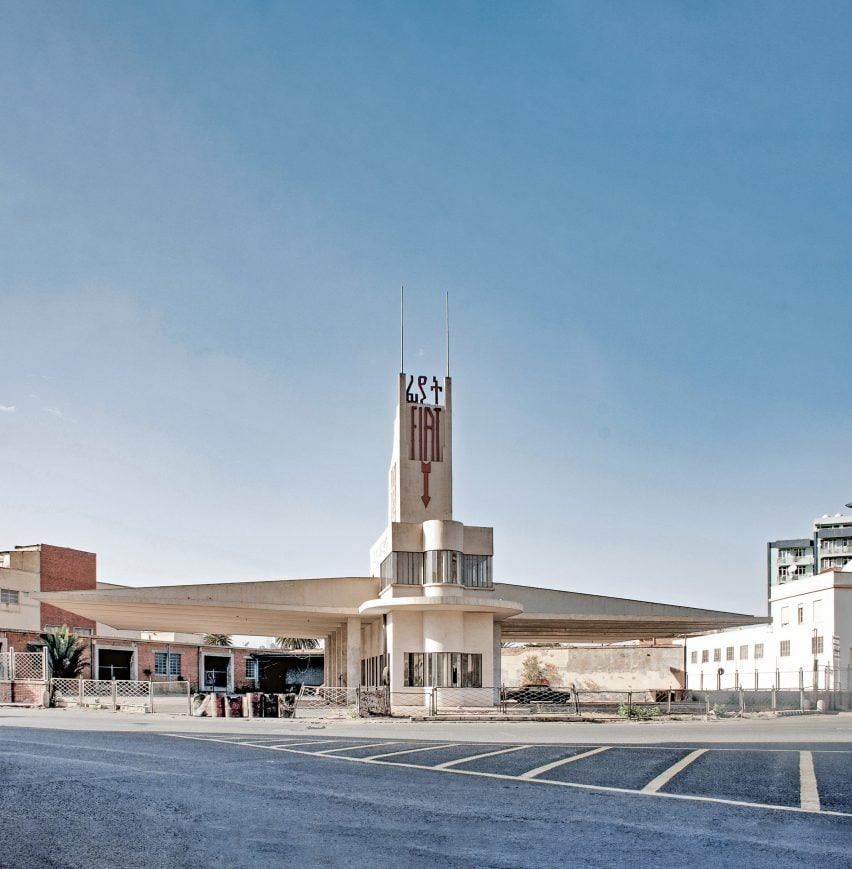
Eritrea
Fiat Tagliero Service Station, Asmara, Giuseppe Petazzi
The Fiat Tagliero Service Station is probably the most remarkable building in Asmara and perhaps one of the finest examples of futurist architecture in Africa and the world.
Giuseppe Pettazzi designed the building to resemble the streamlined and dynamic form of a plane, and translated the modernist spirit of his time into a build manifesto. Its cantilevered concrete wings have a span of 30 metres and hang unsupported above street level.
The colonial architecture of the 20th century is a reminder of an inglorious chapter in European-African history. It is linked to racism and exploitation. It is no different in Eritrea.
But the Italian occupiers left behind an architectural heritage that is unique in the world. One could almost think that the architects were more creative in Africa than in their European homeland.
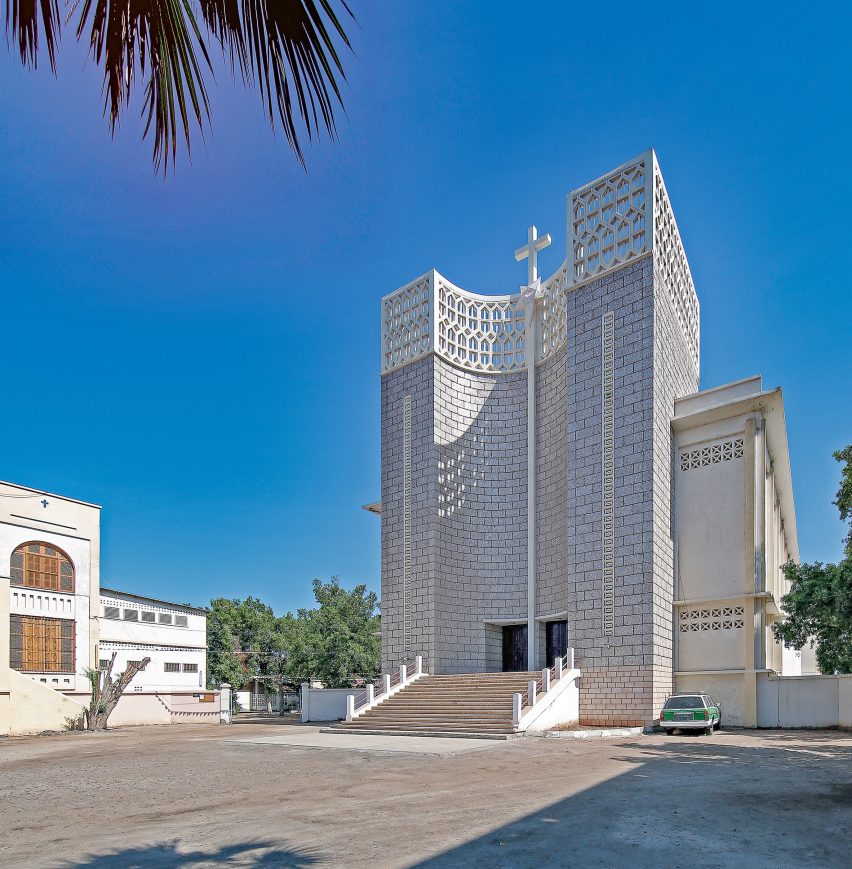
Djibouti
Djibouti Cathedral, Djibouti, by Joseph Müller
A masterpiece of architecture! A clear cube, a successful composition of the entrance and a facade made of seashells that seems almost more mystical than the Word of God – no church can be built better!
Our Lady of the Good Shepherd Cathedral (Cathédrale Notre-Dame du Bon-Pasteur de Djibouti) was built on the site of a previous church, Sainte-Jeanne-d'Arc. The Bishop of Djibouti at the time, Henri Hoffmann, backed its construction, and the Catholic church was consecrated in January 1964.
The architect of the church, Joseph Müller (1906–1992), who drew its plans free of charge, acquired the nickname Kirchenmüller for the many religious buildings he designed at home in France and abroad, from the 1940s to the 1960s.
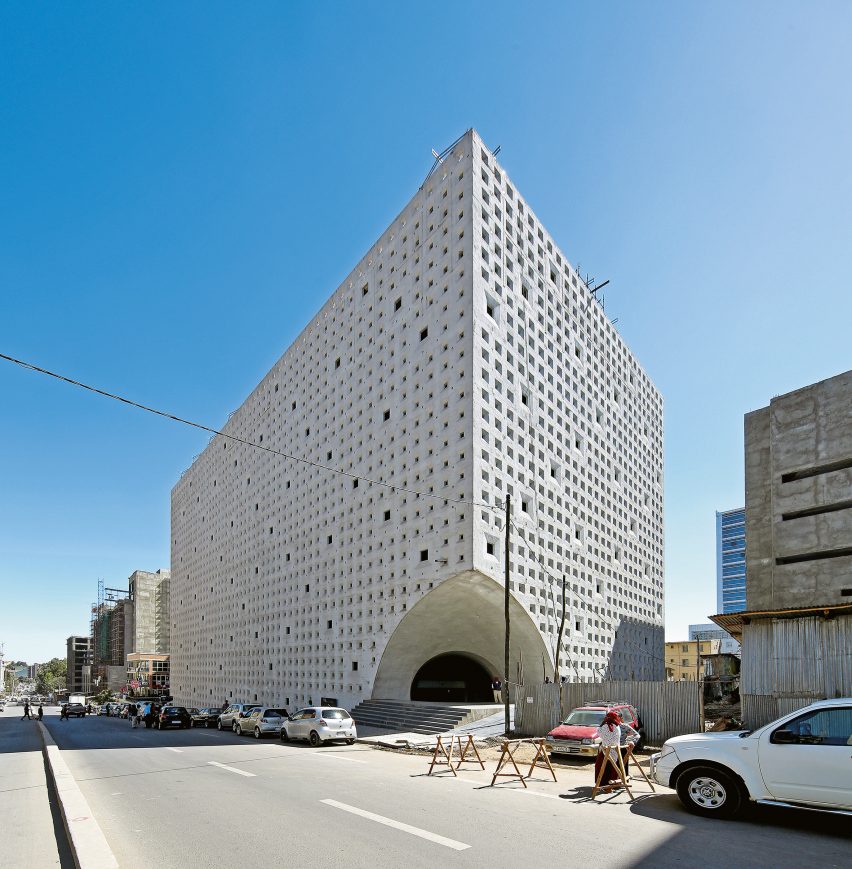
Ethiopia
Lideta Market, Addis Ababa, by Vilalta Architects ⁄ Xavier Vilalta
Another cube. Another mystical building that works with the staging of light. But this is not a sacred building, it's a shopping temple!
The Lideta Market in Addis Ababa is a 14,200-square-metre multistorey building designed by Xavier Vilalta for a competition in 2010. It is located in an area that has been redeveloped within the frame of the government's housing programme.
The surrounding buildings define a dense and lively neighbourhood. The project is a simple rectangular volume with a carved interior void that creates an inclined atrium, which delivers a spatial quality to a traditional market layout.
The building is enclosed by a perforated concrete facade, which allows natural ventilation and light to flow in. The pattern of the facade is inspired by traditional Ethiopian dress and makes the building a landmark in the area.
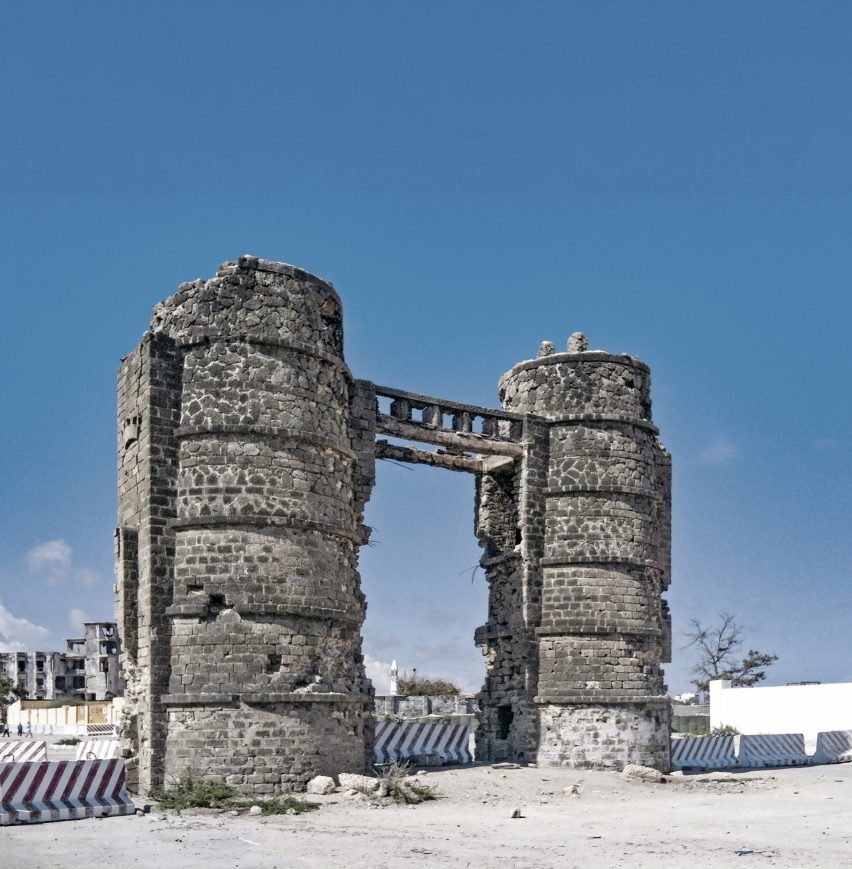
Somalia
Binocularsi, Mogadishu, by Carlo Enrico Rava
The Italian colonial heritage in Somalia is less preserved than in Eritrea. And the Arc de Triomphe is more irritating than reminiscent of an architectural heritage of world importance.
But the civil war has preserved few architectural monuments. Thus, even an almost destroyed relic of the Italian occupiers can become part of a new national identity.
This triumphal arch was designed by the Italian architect Carlo Enrico Rava and realised by the Ciccotti company to celebrate King Vittorio Emanuele III's visit to Mogadishu in December 1934. It stands by the seafront near the customs section of the old port, on a square formerly known as Piazza 21 April.
The arch is made up of rounded twin towers, joined in the middle – hence the name Binoculars.